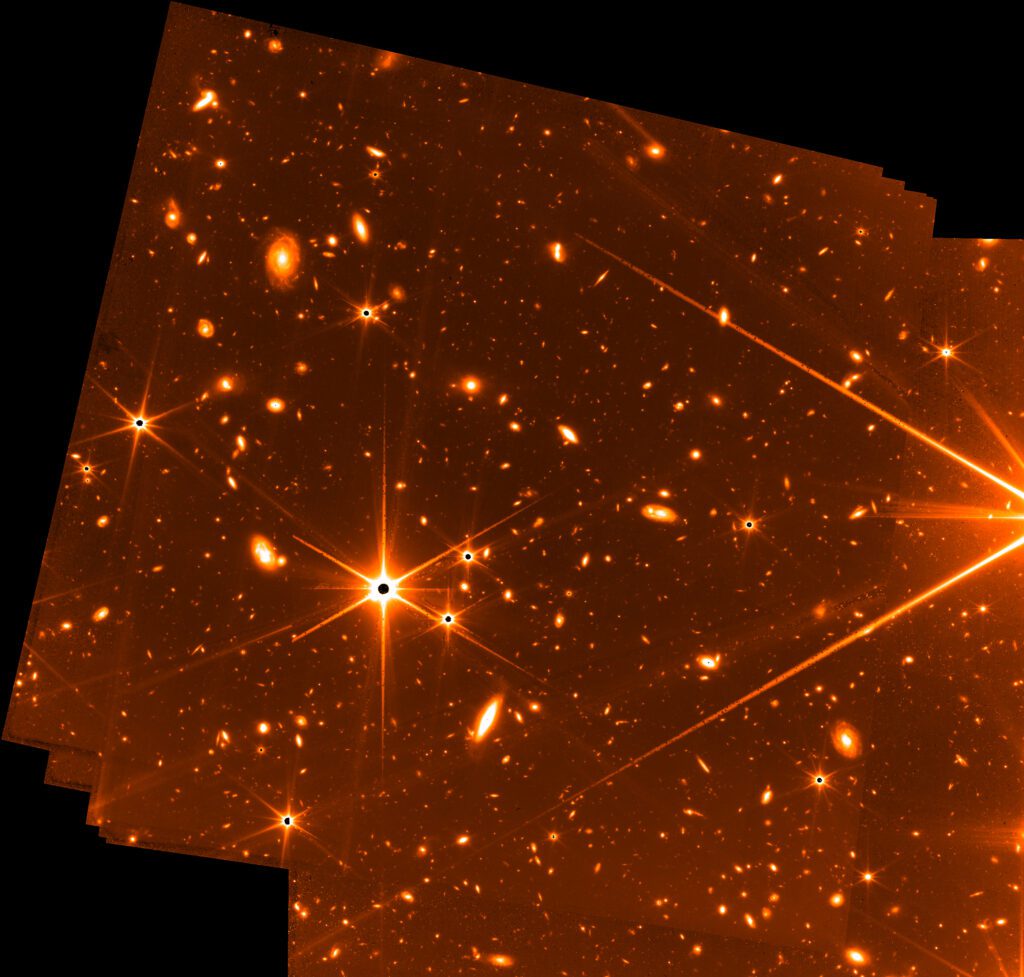On July 12th 2022, astronomy grows up and into its big boy pants. With every mirror aligned, tweaked and focussed, the first ‘live’ images taken from the James Webb Telescope will be shared with the public. Professional and amateur astronomers alike await with bated breath in anticipation for this next level era to begin!
What Is All The Fuss About?
The James Webb Telescope will be able to show us images right back to the very first emerging galaxies and stars. It will reveal objects 10 to 100 times fainter than currently observable with the Hubble telescope. Image tests so far, have been above expectation with sharp, clear detail that has people very excited about it’s capabilities.
This won’t be the end for Hubble though, far from it. Rather Hubble will complement the exceptional Infrared imaging capabilities of the JWT by adding it’s existing imaging capabilities to allow for some staggering hybrid, composite images.
James Webb vs Hubble – Comparison

James Webb
- Launch Year: 2021
- Distance From Earth: 1.5 Million km at Lagrange Point 2
- Wavelengths Observed: Near and Mid Infrared
- Mirror Size: 6.5 Meters across 18 segments.
- Observable Distance: As far as 13.5 Billion Lightyears.
- Cost: $10 Billion
- Operational Lifespan: 10 Years – Possibly up to 20 Years.
- Maintenance: Not Serviceable
Hubble
- Launch Year: 1990
- Distance From Earth: 570 km
- Wavelengths Observed: Partial UV, Visible Spectrum and Partial UV.
- Mirror Size: 2.4 Meters (Primary)
- Observable Distance: As far as 12.5 Billion Lightyears.
- Cost: $1.5 Billion (not including maintenance)
- Operational Lifespan: 35+ Years
- Maintenance: Serviceable as relatively close to Earth.
What Is The James Webb Mission?
The James Webb Telescope will help us to see further into the Universe than ever before, right back to the first galaxies that formed. It will explore stars that are forming planetary systems, and expand our understanding of atmospheric conditions and composition of earth-like exoplanets in the habitable zone around their stars. The telescope may help us identify the first signs of organic life on another planet.
It is the wavelengths that the JWT are designed to explore that will help us to see past the ‘cosmic dark ages’ – that our current abilities struggle to see past – and further into the early universe.
Latest Test Image

The latest test image is a real eye opener. When you consider most of the specs are distant galaxies and the stars are so sharp and clear. Hubble has done wonders for our understanding of the Cosmos, and in revealing the nature of the Universe. James Webb is about to expand on that knowledge in ways we don’t even know yet.
The latest test images are reported to have brought Thomas Zarbuchen from NASA’s Science Mission Directorate (SMD) to the brink of tears. In a news conference recently, Zarbuchen recalled from his first encounter with data from James Webb, that “It’s really hard to not look at the universe in a new light and not just have a moment that is deeply personal. It’s an emotional moment when you see nature suddenly releasing some of its secrets…”
James Webb Telescope – Schedule For Images
NASA are expected to confirm the target of their first ‘live’ quality images on Friday 8th of July, ahead of their publication on 12th July 2022. You can watch the NASA live stream here as the images are revealed for the first time.